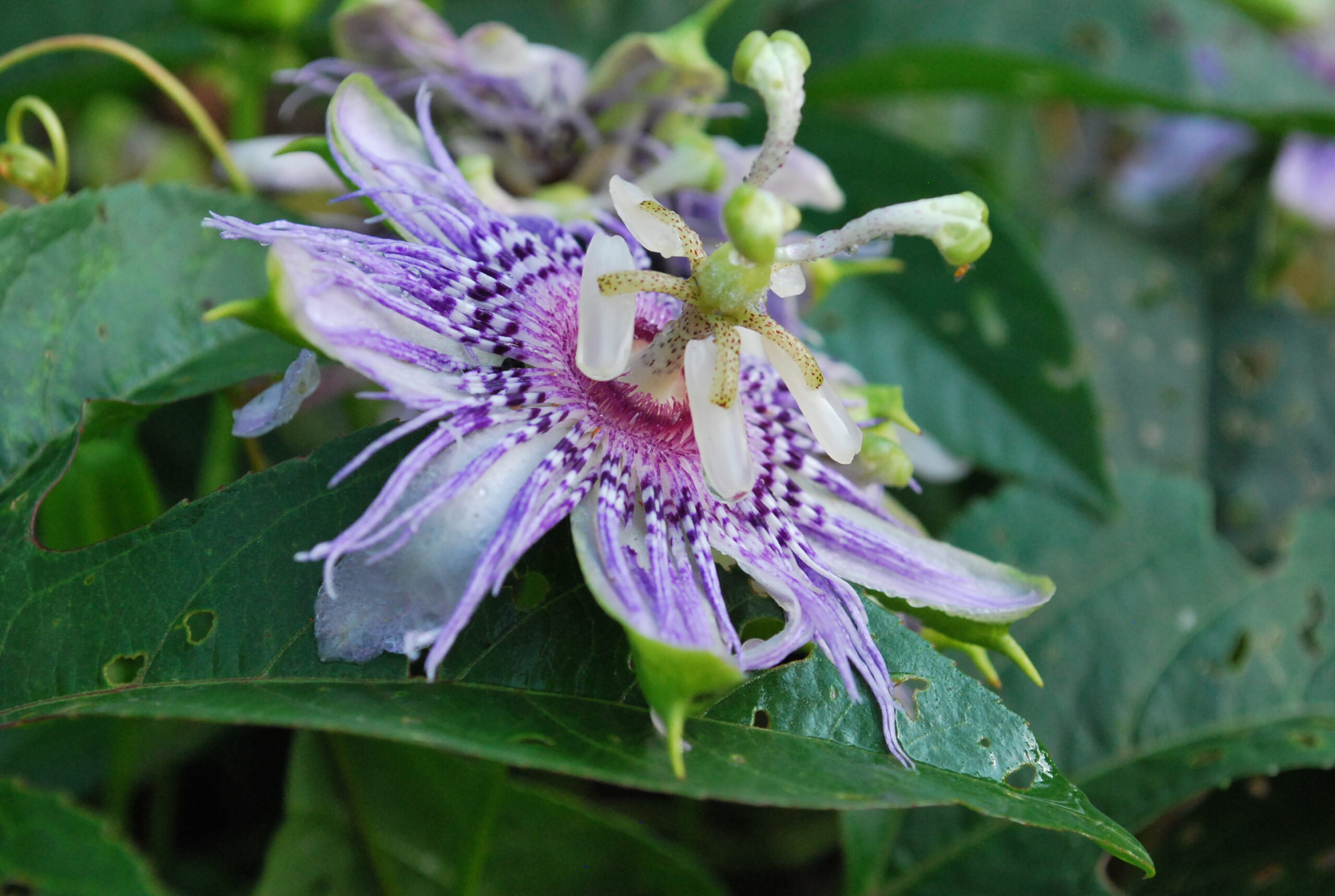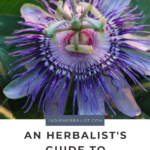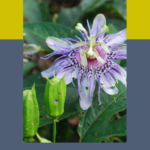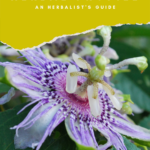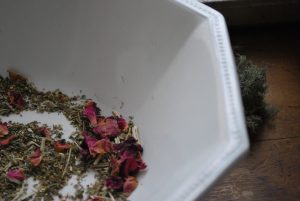Links contained in this post and elsewhere on my website may include affiliate links. When you make a purchase through these links, I earn a commission at no additional cost to you. I only link to products and services that I love - and that I think you will love, too!
Passionflower is a beautiful and fascinating “weed” with a very rich tradition of use for the nervous system and as an antispasmodic. I’ve been a little nostalgic for it this week, so I thought it might make a nice post. I first learned to identify this gorgeous and very versatile plant from my grandmother, but here’s what I have learned about it as an herbalist.
What is passionflower?
Passionflower is a vining, perennial herb native to the southeastern United States. The scientific name for the herbal variety of passionflower is Passiflora incarnata. Other species may be available at your garden center, but these tropical varieties are grown for their fruit.
Also known as maypop, passionflower is a common wildflower and field weed in the southeast- if anything this beautiful can be called a weed! Passionflower develops showy purple and white flowers that look tropical and even a bit like they could have come from another planet altogether!
After flowering, the vine produces fruits that turn from green to yellow when ripe. Like more tropical varieties, the pulp inside the fruit is edible. Wildlife usually finds the ripe fruit before I do, so I haven’t had a chance to try it yet.
Passionflower likes to grow on the edges of fields or in sunny places and can tolerate a wide variety of soils. It prefers fertile, well-drained soil, though, and will grow happily in a garden. I grow passionflower in containers with a trellis!
Stake or trellis this herb to keep it tidy in your garden. Passionflower transplants easily, in my experience. I’ve also grown it from seed.
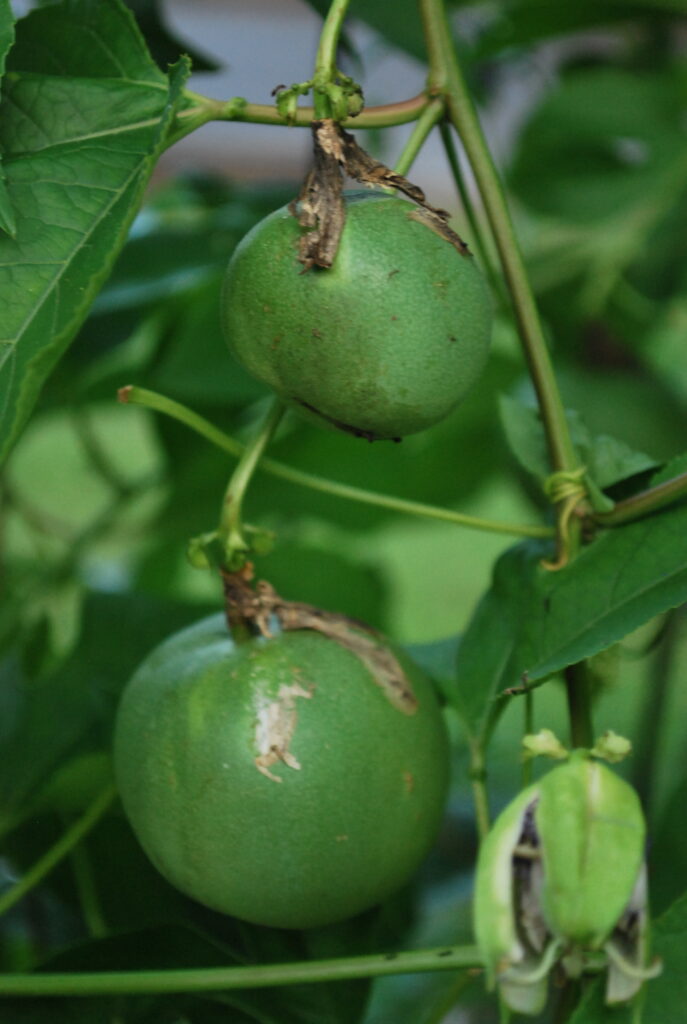
When and and how to harvest
Passionflower vines die back in the fall and winter. New growth emerges in the spring, and the plants begin flowering in early summer- often around the same time as elderflower and albizia.
Harvest the leaves just before or during flowering. This maximizes the beneficial properties of the leaves and also minimizes caterpillar damage. This herb is an important host species for Gulf Fritillary butterflies.
Check for little yellow eggs and tiny caterpillars on the underside of the leaves before harvesting!
Passionflower doesn’t have many look-alikes, especially in the wild. However, clematis is a potential look-alike. It’s an ornamental plant often grown in gardens. Please use a field guide to identify passionflower correctly when foraging, and make sure it’s the correct species of passionflower.
Tips for using passionflower safely
Passionflower may increase the effectiveness of sedatives. Avoid or use with caution alongside drugs such as:
- anticonvulsants
- barbiturates
- tricyclic antidepressants
- benzodiazepines or other sedatives
- monoamine oxidase inhibitors
- sleep aids
Find more information on possible passionflower interactions here and here.
An herbalist’s summary of use
Passionflower leaves are a superb nervine and antispasmodic. It’s one of my favorite herbs to keep on hand because it’s versatile and reliable. Although it is very useful for the stress associated with modern living, many traditional uses make it a good selection for emergent care scenarios when no higher care is available.
Passionflower leaves have a slightly bitter taste. I often use it as an extract. When I use it in tea, I add other herbs like lemon balm, linden, or mint to help temper the taste.
The following actions are traditionally associated with passionflower:
- anodyne (especially for neuralgia)
- antispasmodic
- cerebral vaso-relaxant
- hypnotic
- hypotensive
- nervine
- sedative
Passionflower is gentle enough to be an appropriate herb for children and the elderly when the serving size is adjusted correctly. In my experience, it helps one relax before bed but doesn’t cause drowsiness if used during the day.
As many of you know if you read the blog regularly, I typically defer to reference books when providing information on the correct serving size for herbs. According to herbalist David Hoffman, use 1 teaspoon of dried leaves to 8oz of water to make an infusion for an average adult. (Hoffman, 2004).
He also suggests 1-4ml of extract once or twice a day as a reasonable place to start for extracts (1:5 extract in 40% alcohol).
My summary of passionflower
This is a wonderful herb to add to your materia medica as a home herbalist. It’s gentle but highly supportive. It can easily become a staple ingredient in syrups, teas, and other herbal goodies meant for supporting nervous system health.
If you live in the southeast, consider adding it to your butterfly garden or introducing it around your homestead. The beautiful flowers trailing along a fence are as rewarding as the gift of the leaves.
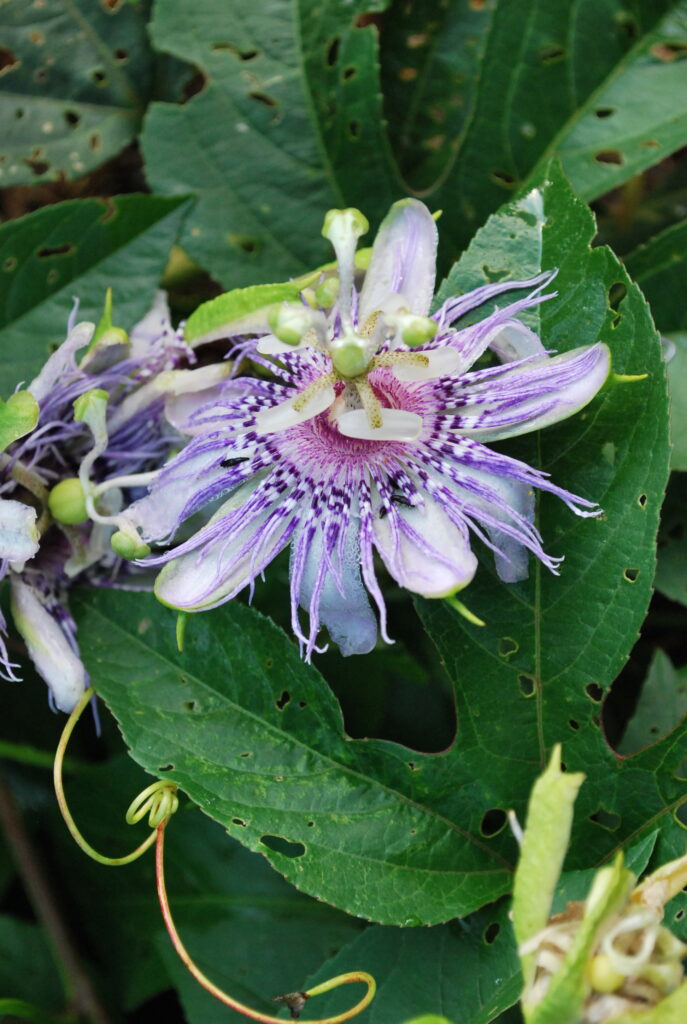
Originally published January 6, 2016. Updated March 9, 2022.
References
Hoffman, D. (2004) Medical herbalism: the science and practice of herbal medicine. Healing Arts Press.
McConnell, J. (2014). Plant purple passionflower vine for gulf fritillary butterfly. https://nwdistrict.ifas.ufl.edu/hort/2014/09/02/plant-purple-passionflower-vine-for-gulf-fritillary-butterfly
Memorial Sloan Kettering Cancer Center (2020). Passionflower. https://www.mskcc.org/cancer-care/integrative-medicine/herbs/passionflower
Mount Sinai Health System (Nd). Passionflower. https://www.mountsinai.org/health-library/herb/passionflower
